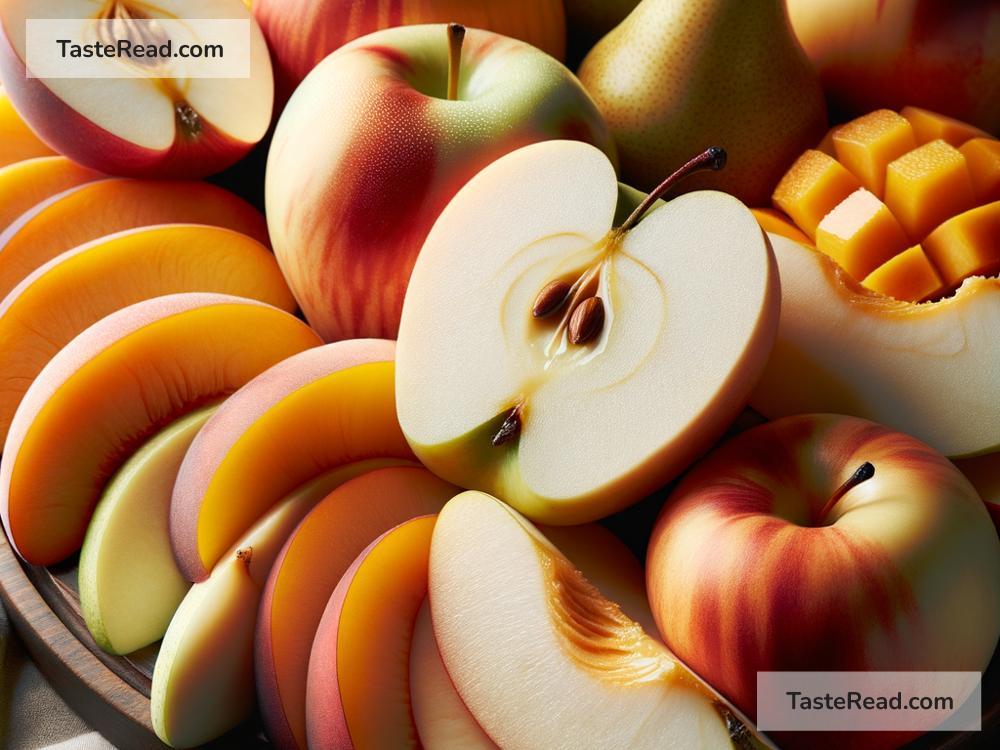The Role of Pectin in the Mouthfeel of Fruits
Have you ever wondered why some fruits feel smooth, soft, or even slightly sticky in your mouth? That sensation isn’t just magic—it’s pectin doing all the work behind the scenes. Pectin plays a key role in how fruits feel when you eat them, a concept known as “mouthfeel.” But before we dive into what pectin is and why it matters, let’s break it down in simple terms.
What Is Pectin?
Pectin is a natural substance found in the cell walls of fruits and vegetables. Scientists call it a “polysaccharide,” but all you need to know is that it acts like a glue that keeps the fruit’s cells together. Without pectin, fruits wouldn’t hold their shape—they’d be mushy or watery.
Pectin is especially abundant in fruits like apples, citrus fruits (like oranges and lemons), berries, and pears. It’s the magic ingredient that gives jams and jellies their smooth, spreadable texture when mixed with sugar and acid.
But pectin isn’t just about jam-making—it’s also responsible for the texture of raw fruit, influencing how it feels in your mouth when you take a bite.
What Is Mouthfeel?
Mouthfeel refers to the physical sensations you experience when food is in your mouth. Is it soft or chewy? Sticky or creamy? Mouthfeel is a big part of what makes eating enjoyable. For fruits, their mouthfeel depends on factors like water content, fiber, and—yes—pectin.
Think about biting into a ripe peach versus a crunchy apple. The peach feels smooth and almost velvety, while the apple is crisp and firm. That difference comes down to the way pectin interacts with water and other substances in the fruit.
How Does Pectin Affect Mouthfeel?
Pectin influences how firm, juicy, or sticky a fruit feels in your mouth. Here are the key ways pectin affects mouthfeel:
1. Firmness
Pectin acts like a scaffold, keeping the cells of the fruit together. Fruits with high pectin content often feel firm and structured. That’s why an unripe pear feels hard—it’s packed with intact pectin. As the fruit ripens, enzymes break down the pectin, making the pear softer and juicier.
2. Juiciness
Pectin is great at binding water. When there’s a lot of intact pectin in a fruit, the water stays firmly trapped in the cell walls, and the fruit feels moist and juicy. As the fruit ripens and the pectin breaks down, the water is released, making the fruit feel extra juicy in your mouth.
3. Thickness and Stickiness
In some fruits like berries or plums, pectin creates a sticky or somewhat gooey texture. That sticky feeling comes from the way pectin interacts with sugars and water in the fruit. This is especially noticeable in fruits used to make marmalades or preserves.
4. Smoothness
In fruits like bananas, the pectin combines with sugars to give a smooth, creamy mouthfeel. This is why a ripe banana feels soft and silky when you eat it.
How Does Ripening Change Pectin?
Ripening is a process where fruits transform from hard, sour, and unripe to soft, sweet, and ripe. A big change happens to pectin during ripening. Enzymes in the fruit begin breaking down the pectin into smaller pieces. This makes the fruit softer and easier to eat.
Take an apple, for example. An unripe apple feels crunchy and has a firm bite because its pectin is intact. But when an apple ripens, the pectin breaks down, and the fruit becomes slightly softer and less crisp. This change in texture is why ripe fruits feel so different from their unripe counterparts.
Pectin and Cooking
Here’s another cool fact: cooking changes pectin, too! When you cook fruits, their pectin dissolves and thickens the liquid around them. This is why cooked fruits like applesauce feel smooth and why boiled jams become thick and spreadable.
If you’ve ever made homemade jam, you know that adding extra pectin (in powder or liquid form) helps it set properly. That thick, sticky texture in jams and jellies? That’s pectin doing its job!
Why Do We Care About Mouthfeel?
Mouthfeel has a big impact on how much we enjoy the foods we eat. Fruits with a pleasant mouthfeel are easier and more enjoyable to eat. For example, a juicy peach feels refreshing and satisfying, while a crisp apple delivers a crunch that many people love.
Mouthfeel also helps us judge how fresh and ripe a fruit is. If a banana feels overly mushy or an apple feels too soft, we might assume it’s past its prime. Pectin plays a big role in these first impressions.
Conclusion
Pectin is a behind-the-scenes hero that makes fruits firm, juicy, soft, or sticky—all the textures you love. This natural substance influences the mouthfeel of fruits and changes as fruits ripen. From the crunch of an apple to the smoothness of a ripe banana, pectin helps make eating fruit an enjoyable experience.
So next time you bite into your favorite fruit, take a moment to appreciate the magic of pectin. It’s nature’s way of making your food feel just right!


